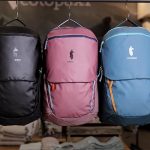Overall sales for the entire winter sports market (including specialty and chain stores), were flat — up 0.2% in dollars to $651.2 million for the August through November period of 2004, compared to $649.6 million reported last year, according to the SnowSports Industries America (SIA) Retail Audit. Unit sales were down 5.5%. Sales at specialty ski and snowboard shops were down 2.7% compared to last season. In dollars, that translates to $505.9 million in sales compared to $520.1 million in 2003. Unit sales were down from last season 5.4%.
“Integrated ski systems had double digit growth in both specialty and chain stores, clearly becoming the way of the future. Also not to be ignored – twin tip skis are the hottest sellers this season” said Christine Martinez, market research manager for SIA, the not-for-profit industry trade group that represents manufacturers and distributors of snow sports products. The SIA Retail Audit tracks and reports sales in all snow sports product categories. This is the second report of six that look at sales through March 31, 2005, the end of the winter season.
TWINTIP SKIS HERE TO STAY
Overall equipment sales (alpine, snowboard, Nordic, Telemark and Randonee/AT) were down 6% in dollars as compared to last season with season-to-date sales reaching $214.7 million through November 2004. In specialty stores, alpine equipment (including skis, ski systems, boots, bindings and poles) sales decreased 4% in dollars this season over last. Alpine skis, excluding integrated systems, fell 12% in dollars over last season, ending November with $40.8 million in sales. End of the month inventory stood at 399,000 units, 17% fewer units than at the end of November 2003. Add alpine skis to integrated systems and total ski sales fell 1% in dollars.
At a season-to-date average retail price of $352, twin tip ski sales shot up 42% in dollars, reaching $3.8 million in sales for the period of August – November 2004. Last year at this time, twin tips retailed for $382. At the end of this November, twin tips were 34% sold-through, up from 28% sold-through at the end of November 2003. They will likely be sold-through well before the end of the season.
Noticing the trend toward fatter skis, most manufacturers increased the width of their alpine carver skis, and the result was a substantial 42% dollar increase in sales over last season and $9.5 million in sales for the first four months of the season. (Leisure Trends Group has changed the carver max width definition to 69mm to reflect the wider carver skis that are being produced.)
With a season-to-date average retail price of $462 (down $28), fat skis declined 1% in dollars as compared to last season.
Midfat alpine skis dropped 42% in dollars when compared to the same August to November period in 2003. With season-to-date sales at $13.2 million, midfats accounted for 26% of all alpine ski dollars sold, down from 38% of the units for the same August-November period in 2003. Average retail prices increased from $321 to $329.
After last season’s strong start, junior ski sales continue to decline this season, with a 21% drop in dollar sales. End-November inventories were 10% greater than they were a year ago.
By the end of November, total alpine boot sales were showing only a slight 1% dip in dollars ($51.3 million in sales) as average retail prices moved from $218 to $234. High performance boot dollars increased 12%, sport performance were up less than 1%. Recreation and soft boot dollars fell 18% and 43%, respectively. At the end of November, the alpine boot category was 25% sold-through, the same as at the end of November 2003.
Add stand-alone alpine bindings to those attached to integrated systems and total binding sales increased 2% in dollars this season-to-date. However, stand-alone binding sales were down 22% in dollars as compared to last season, with season-to-date sales totaling $13.5 million. Similar to junior ski and junior boot sales, junior alpine binding sales dropped (down 31% in dollars).
Alpine poles fell 3% in dollars as adult pole retail prices edged up $2 to $32. Contributing to the higher overall price was the 21% drop in carryover unit sales.
TWINTIP SKIS HERE TO STAY
Integrated ski system sales jumped 22% in dollars when comparing this August to November period to the same period a year ago. Integrated ski systems had double digit growth in both specialty and chain stores, clearly stealing sales from non-integrated alpine skis which suffered double digit declines. Last year at this time, alpine skis outsold integrated systems 4.6 to 1. This year that ratio is 2.8 to 1. Average retail prices for a system dropped from $511 to $454, an 11% decline. Retailers continue to invest in integrated systems. At the end of November 2004, integrated ski system inventories were 36% higher than at the end of November 2003 and sales had reached $25.4 million. So far this season, integrated systems are 25% sold-through and on pace with last season. Out of all integrated ski systems sold so far this season, 49% of the units were midfats and 42% were carvers.
TELEMARK EQUIPMENT BRINGING IN SALES
Telemark ski equipment continues to show growth this season with a 9% dollar increase over last season, and reaching $2.1 million at the end of November. Telemark ski sales grew 16% in dollars. The season-to-date average retail price for Telemark skis increased from $357 to $391. Telemark boots and bindings also managed dollar increases — 20% and 15%, respectively.
Trails without snow in the Midwest and East had the Nordic categories off to a slow start. The Nordic ski equipment category fell 16% in dollars this season over last. Nordic skis (down 18% with $2.9 million in sales), bindings (down 24% with $939,000 in sales) and poles (down 33% with $547,000 in sales) all experienced dollar declines as well.
SNOWBOARD MARKETS FALL BEHIND
Snowboard equipment’s slow start continued in November. Snowboard equipment sales (including snowboards, boots and bindings) were down 11% in dollars with a total of $71.1 million in sales. Snowboards (down 12% with $34.9 million in sales), boots (down 14% with $19.4 million in sales) and bindings (down 4% with $16.9 million in sales) all experienced dollar decreases this season over last.
Comparing this season to last, all snowboards saw decreases in sales. All mountain boards were down 4% with sales at $3.8 million by the end of November. The average retail price for an all mountain board fell from $239 to $223. Freestyle board dollars slid 4% and accounted for 36% of all boards sold-through November (up from 32% last season). Freeride boards, the largest category with 38% of all snowboard units sold this season, dipped 12% in dollars. Total snowboard sales were down as retailers cleared out much of their extra snowboard stock – carryover unit sales plunged 25% with season-to-date sales totaling $3.0 million.
Step-in boots and bindings continued their decline this season with 48% and 81% drops in dollar sales, respectively, over last season.
Snowboard apparel sales followed the trend of snowboard equipment and slumped 18% in dollars this season over last, ending November with $25.9 million in sales. Snowboard tops plummeted 26% in dollars while snowboard bottoms fell 16% in dollars.
After a strong start last year, junior snowboard apparel lost steam. Junior top and bottom dollars sunk 43% and 34%, respectively.
VEST AND FLEECE SALES SURGE
Specialty apparel sales (including tops, bottoms, suits and snowboard) were up 2% in dollars with season-to-date sales totaling $163 million. At a season-to-date average retail price of $175, insulated parka sales rose 5% in dollars. At the end of November, insulated parkas were 25% sold-through. Soft shell parka sales slowed down after nearly triple digit growth in the past two seasons. Sales still managed to jump 14% in dollars as average retail prices slipped from $194 to $187. Soft shells continue to roll with healthy increases, especially as more manufacturers offer a soft shell selection in their lines. After a tough season last year, shell parkas continue to rebound with a 2% dollar gain. Average retail prices moved up $1 to $169. Vest and fleece sales also improved with dollar sales up 36% and 15%, respectively, over last season.
Alpine bottom dollars grew 2% this season over last. The season-to-date average retail for a pair of bottoms increased $5 to $99. Fleece pant dollars shot up 21% while apparel suits crashed 23% in dollars. At the end of November, all apparel was 24% sold-through.
ACCESSORIES CATEGORY SALES DOWN SLIGHTLY
The accessories category in specialty stores decreased 2% in dollars over the same period in 2003 with season-to-date sales of $128.1 million. Equipment accessories decreased 5% due to hefty dollar drops from snow decks/skates (down 51%) and snowshoes (down 66%).
Apparel accessories saw sales increase 1% for August through November of this season over last. Winter boots continue to perform well with sales up 14% reaching season-to-date sales of $2.2 million.
However, dollar declines in headwear (down 10% with sales at $10.2 million), gloves (down 6% with sales at $9.3 million) and mitts (down 4% with sales at $3.5 million) helped keep category growth down.















